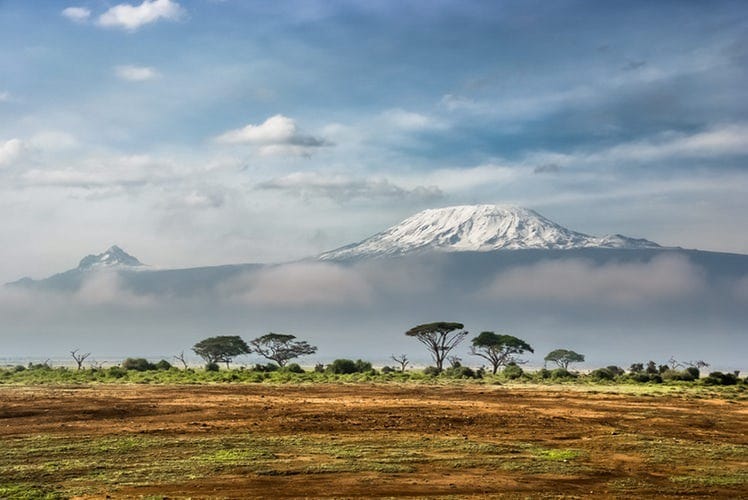and what Kilimanjaro has to do with it

Sergey Pesterev - Unsplash
I first discovered the idea of market category more than 20 years ago, in the book that became my guide in marketing, “22 Immutable Laws of Marketing” by Al Ries and Jack Trout. I was a young marketing manager that was, for the first time, responsible for leading the marketing and sales for the largest beekeeper and honey factory in the country.
It started with beekeepers and ended with entrepreneurs
The business started in 1936, and was successful and stable with a solid income for many years; it was focused mainly on the direct income and selling the production, until the young team used a market consultant assistant and started to develop the brand as a leading brand in its category.
The main idea of market categories is about leading a specific field or space in the minds of the customers. That means we have to understand customers or consumers’ behavior and perceptions of any product or new field in order to build a leading brand that will yield excellent financial results and high company value.
Using the method of leading the perceived category led the honey factory to double its revenue and profits in one year and built new growth that increased the company’s value dramatically.
Since then, I have had the chance to use the method of leading the market category again and again, especially with launching multinational brands (like 3M, Nokia, Lipton, Fuji, Energizer and more) to new countries and establishing new brands in new fields, like health food back in 1998.
When I started working with entrepreneurs and startup companies, I realized how genius this method was for new, totally unfamiliar products and inventions; enabling entrepreneurs to find whether and where there is a real need. Once we understand that, we can come up with the new category from the potential customers’ point of view. And start introducing our new product or service as the first and leading solution of the new category.
Sounds simple? It is. Surprisingly, marketing and sales are simple, as long as we understand where the biggest opportunity is in the minds and behavior of the potential customers.
That’s how I started my journey; by discovering the rules of marketing and leading the category and then using it as a formula to gain huge business success over and over for known brands in new territories, and especially to new ventures in this wonderland of entrepreneurship.
When success happens accidentally
I interviewed Tomas Laurinavicius to the REACH OR MISS podcast.
Tomas is a young, successful entrepreneur who had a short yet fascinating journey to success by building and leading the new category of Lifestyle Design.
Now, I can see some of you jumping in your chairs; you’re right! Lifestyle Design isn’t a new category, but it’s also not an established one. As Mark Schaefer writes in his excellent new book, “Known”, you have to use Google to search for your space. If you find a few hundred thousand search results, but less than one million, it might be a good space to establish your leadership in. (Lifestyle Design has 523,000 results.)
The beauty of Tomas Laurinavicius’ story is that it all happened by accident. Tomas told me it started ten years ago, when he was bored of computer games, and started teaching himself design and Photoshop and found his first online clients.
“I was really excited about online marketing and blogging, so I started blogging while getting some freelance design clients.
I moved to Denmark and then to London to get a formal education and corporate job, but I found nothing that fit my life style plans, so I switched to focus on life style design for the last two years, and I started reading and studying self-improvement, learning more about entrepreneurship, and how to use all that info to serve more people.
At first, when I was blogging, I would see what was trending and what everybody else was writing about, and then write a post or a story on that subject. Basically, I used the Internet to find content that could be recycled. And there was so much recycled content online that no one engaged with.
Two year ago, I wrote a post about 12 habits that I stole from ultra-successful people. So, I wrote about how I engineered my own day by stealing habits from people like Warren Buffett, Bill Gates, Steve Jobs, and more. And how I designed my life style around these habits, so I can have a perfect morning and a perfect day. And that post went viral so quickly, TIME reached out and wanted to publish it, and New York Observer published it as well and many more.
This post resonated with people so much because it wasn’t recycled, Tomas says, and also because I didn’t say these are the habits I came with, I said I have stolen these habits from the successful people because I believed in their missions, their visions, and their lives.
And half a year later, an agent reached out and offered to write a book about it; so right now, I’m about to complete this book.”
Sometimes, indeed you are in the right place, at the right time, with the right idea, and great things happen to you by accident. It happens to all of us, but we can’t rely on random miracles.
I remember, as a young manager, I once read a special edition of some business magazine about “Who is a successful leader”. They interviewed very successful businessmen about their idea of the most successful business leaders. The response that stuck with me was something one of the business managers I admire most said, “A good business leader is one who can survive a series of failures.” I stared at the page in confusion. I really thought an excellent manager is a strictly successful one. I didn’t even think there was a place to talk about failures when you plan to win. And here, one of the most respected successful leaders says a good business leader is the one who also fails? More than once?
30 years later I definitely know from my personal experience that any successful manger is going to fail more than once. In fact a lot of the most successful entrepreneurs I interviewed on my podcast said their failures were the seed for their biggest success.
However I also know that in order to reach the greatest success entrepreneurs are dreaming about, and in order to turn your failures into that success, you have to plan to be on the right track to reach the right customers that would look for your new product and would pay for it.
By understanding your potential customers and plan your marketing and sales activities accordingly you would increase dramatically the chances to gain huge success and recognition.
But most entrepreneurs don’t try to understand their customers. They flow, trusting their gut feelings but they don’t try to understand their potential customers and they don’t plan on reaching the right people with the right message.
OK. So, what’s the story with Kilimanjaro?
The idea of leading the category, which means taking ownership of the market perception in the mind of the customers, reminds me of climbing and conquering a mountain’s peak.
I found out there is a high similarity in the process of studying, planning, climbing step after step with unknown elements in the way (weather…), the challenging journey, and then the incredible feeling of success of such a significant achievement.
When, a few years ago, we prepared kind of cartoons for the main entrepreneurial management, marketing, and sales expressions dictionary, we had this drawing under the “What market category should you lead” definition.

Leading your (new) Market category
When I interviewed Tomas Laurinavicius about his success, I asked about a mountain he climbed or wished to climb or any mountain he feels connected to. His answer was “Yes. I’m really fascinated by mountains. You know there isn’t a logical reason why people climb mountains; you get nothing, it’s exhausting, climbing Everest costs a fortune; but people still do it, and I couldn’t understand it until I climbed my first mountain volcano in Bali. I was completely exhausted and suffering from the cold when we reached the top and watched the sun rise. But I felt it was completely worth it, and I asked myself why; it’s not that I wanted to prove anything to myself, but I think it’s really beautiful to see the capabilities of humans and to see there is much more in life than sitting at home, scrolling your Facebook feed. You feel more connected to the world and you see how beautiful it is. So, I’m fascinated by mountains, and I would love to climb Everest one day; maybe not to the top, but to one of the main base camps.”

Mount Batur Volcano Bali Indonesia — Tomas’s mountain
As for me? My mountain is Kilimanjaro. As a young girl, reading every available book from a young age, I was fascinated with the story of “Sia Lives on Kilimanjaro (originally Sia bor pa Kilimandjaro, 1958)”.
Over the years, I read several news stories about mountaineers who climbed Kilimanjaro.
Last year, on a stunning trip to Tanzania, we had a few opportunities to see the beautiful mountain. My kids, as part of their “doing new things together we’ve never done” list, decided that one day they’ll climb Kilimanjaro together. So for now, this is “My Mountain”.





